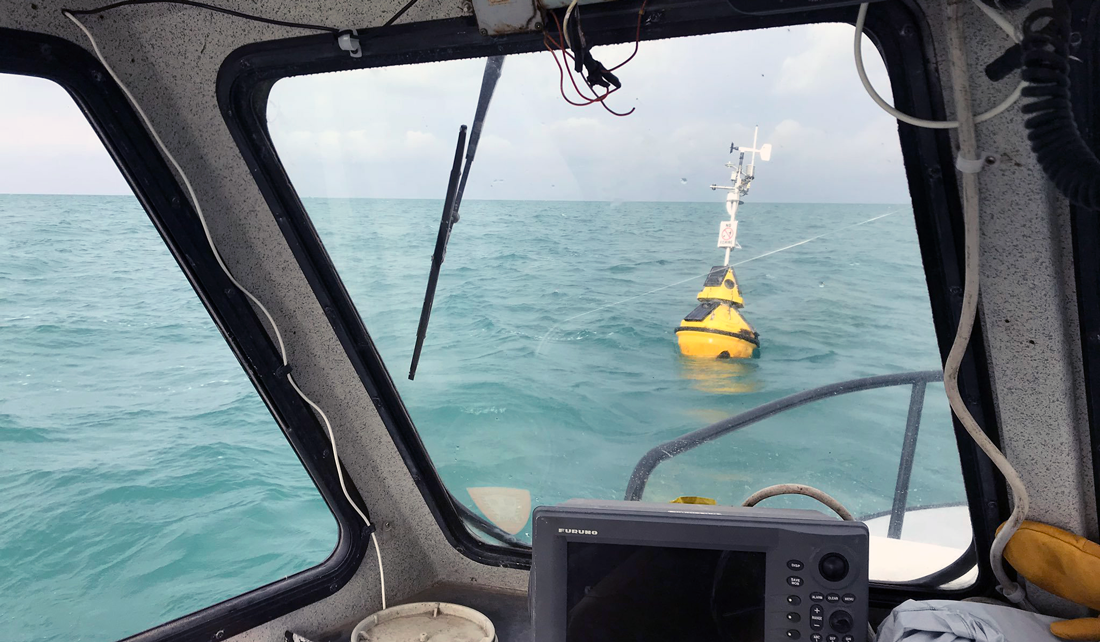
Data buoys, also known as weather buoys, are loved by boaters, swimmers, paddlers, fishermen and anyone who uses the water recreationally or for work. Knowing weather and wave conditions before going out on the water makes boating and other activities safer. Many people use our website and follow our Two Yellow Buoys on Twitter to get information on water and air temperature, wind speed and direction, wave height and more about southern Lake Michigan. While the buoys are out on the water, we host real-time data on our website for nearshore conditions off the coasts of Michigan City, Indiana, and Waukegan, Wilmette and Winthrop Harbor, Illinois.
Rich Armstrong of BoatUS Magazine highlighted these “weather watchdogs” and Illinois-Indiana Sea Grant’s Jay Beugly—our buoy handler—in his article “Data Buoys: Sentinels of the Sea,” as part of the December 2019 issue.

